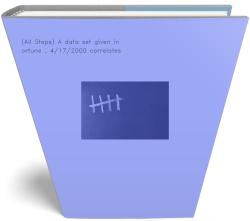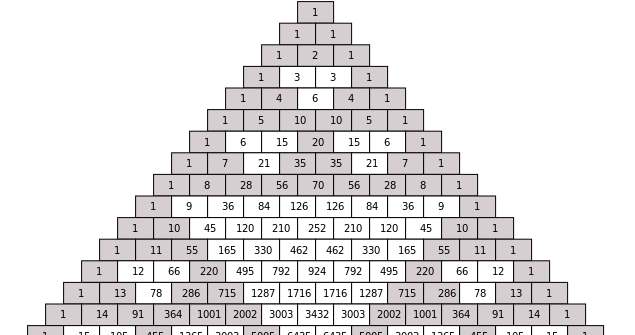A corn farmer knows that, from his experience, nitrogen (n) and phosphate (p) are two of the major nutrients
Question 1. A corn farmer knows that, from his experience, nitrogen (n) and phosphate (p) are two of
the major nutrients determining the amount of corn that can be grown on an acre of land. In order for the corn farmer to make decisions about the proper mix of the nutrients, information about the underlying production function for corn is needed. The farmer postulates that the function of corn production is as follows,
\(q=a{{n}^{{{b}_{1}}}}{{p}^{{{b}_{2}}}}\)
where q is the level of corn output per acre; n , p are the pounds of the two nutrients nitrogen and phosphate that are used; a is a constant, b 1 and b 2 are the corresponding exponents.
In order to find the value of a , b 1 and b 2, the farmer carried out an experiment that
systematically changes the levels of the nitrogen and phosphate and recorded the corn output in the worksheet Question 1. Please use the recorded data to help the farmer to find the values of a , b 1 and b 2.
Question 2.
A marketing manager for a large cafeteria chain wished to investigate sales of coffee.
Twenty three cafeterias that were similar in such respects as volume of business, type of clientele, and location were chosen for data collection. Data were collected on sales of coffee (in hundreds of gallons and coded as SALES) and the number of coffee dispensers (coded as DISPENSE) within the cafeteria. The results are shown in the worksheet Question 2.
-
Fit a simple linear regression model to the data with SALES as the dependent variable.
Report the intercept and the slope of the simple regression model in the Answer Summary worksheet. -
Report the proportion of the variation in SALES that is explained by the model you
found in part a. - Is the overall model found in part a significant at the 0.05 level?
- Does the simple linear regression violate the normality assumption?
-
Find a "logarithmic" model with the form \(y=a+b\ln x\) and a quadratic (polynomial of
order 2) model to predict sales from the number of dispensers. Write down the respective \({{R}^{2}}\) value in the Answer Summary worksheet. -
Use your three models (linear, logarithmic, and quadratic regressions) respectively to
predict what SALES will be when there are 5 dispensers. - Statistically, which model of the three is the best model to be used for prediction?
Question 3. Advertising Strategy for Creatine
Creatine was a mature proprietary sports nutritional which had been marketed for a decade. Creatine’s marketing program had undergone little change for some time when a new product manager, Alison Silk, assumed responsibility for the brand. Silk undertook a careful review of the brand’s history and available marketing research information. There were 12 competing brands, four of which accounted for 60% of the market and were nationally distributed and supported by media advertising. Creatine was an important but not dominant brand among the four, with a 15% share of market. No consumer promotion (dealing,couponing, and so on) was used to any appreciable extent, and price cutting was negligible, but all four major brands were priced above the level of the remaining brands in the category, and all four advertised heavily. After working on Creatine for several months, Silk became convinced that sales could be increased by repositioning the brand. The brand’s advertising agency prepared and tested some new approaches in focus group interviews. The results were quite favorable. Encouraged, Silk authorized the agency to produce television commercials, to be aired on local TV stations, representing two different advertising strategies: one emphasizing what was labeled an " emotional " approach, the other a " rational " approach. Silk planned a market test to determine which one to use in a national roll-out at a later stage. Silk was also uncertain about what level of advertising was needed to support the strategy change. After consulting with the marketing research manger, Silk proposed that an advertising experiment be conducted to address the following issues:
- Do the "emotional" and "rational" advertising strategies differ in their effectiveness?
- What level of advertising expenditure should be used for Creatine for the coming fiscal year to maximize sales?
Experimental Design
Two elements of the advertising campaign were to be systematically varied: advertising
strategy and media spending. Two strategies ("emotional" and "rational") and four levels of advertising intensity were to be tested. Expressed in 6-month expenditures per 100 "prospects" (potential customers) in a geographical area, the levels to be tested were $2.50, $4.00, $5.50, and $7.00. Silk’s company, had divided the United States into two segments; Segment A consisted of states lying along the East and West Coasts of the United States while the rest of the country comprised Segment B. The two segments contained about equal numbers of total prospects. Forty sales regions (out of a total of 375) were selected at random from the region designated as Segment A, and another forty were selected from Segment B. The complete experimental design, therefore, provided 80 observations (2 segments × 2 strategies × 4 levels of media expenditure × 5 test regions).
Sales measurements were obtained based on point-of-sale information in each of the regions. The experiment was run for six months, a period known from prior investigations to be sufficient for the long-term response to advertising to become clear. Arrangements were also made to monitor competitive advertising activity in each of the 80 test regions. These observations of competitive advertising activities were then used to estimate the cost of competitors’ advertising.
Experimental Results
The results of the experiment are recorded in worksheet Question 3. Each of the 80 rows in the table reflects one test sales region. Each row records the segment, advertising strategy, advertising expenditure level (Ad Dollars), competitors’ total advertising expenditure (Competitors’ Ad Dollars), sales increase, and prospects’ average income in a region.
Meeting with the Division Vice-President
Alison then presented her experimental results to the division vice president, Yauda Bassok, whose approval would be needed for a change in advertising strategy. Alison was surprised by Yauda’s response. "I have to tell you that these results are not useful!" Yauda said. "It’s clear that our competitors have run interference on your experiment. As you can see, they systematically varied their own advertising strategy across our different test regions." "It could be," remarked Alison, "that their response mirrors the response they will follow if we go national." "I doubt it," responded Yauda. "I’d be prepared to bet that no matter which strategy we choose, or what media expenditure we pick, they’ll spend at a rate of about $27 per 100 prospects per sales region per 6-month period. I say that because that is what they have always done in the past." By the way, I suggest you to focus on the regions with average incomes higher than $40,000 since we can get better advertising returns from those regions.
Further Analysis
Back in her office, Silk wrote down two hypotheses on a piece of paper:
Silk’s Hypothesis Creatine’s competitors will react to our national strategy (whatever it might be) in the same way as they did in the test. Yauda’s Hypothesis Whatever our national strategy is, we can expect our competitors to spend an average of $27 per 100 prospects per sales region per 6-month period. Concerned that these two hypotheses might have profoundly different implications for a national advertising strategy for Creatine, Silk needs your help to answer the following questions.
(I). If Silk decides to focus on segment A to launch the advertisement using the rational
strategy with $5.00 Ad Dollars (Note that $5.00 is not a typo), what is the average
sales increase that Silk can expect?
(II). Does Yauda Bassok’s claim about focusing on the regions with higher than $40,000
average incomes make sense?
(III). According to the experiment, will the competitors react to Creatine’s strategies
differently after controlling for the segments, Creatine’s ad dollars, and prospects’
average income?
(IV). For each ad dollar that Creatine spends, do these two strategies affect the rate of
sales increase differently after controlling for competitors’ advertising expenditure
level?
Deliverable: Word Document



![[All Steps] Grade point average The average undergraduate grade [All Steps] Grade point average The average](/images/solutions/MC-solution-library-80762.jpg)


![[See Solution] The Bureau of Labor Statistics collects information [See Solution] The Bureau of Labor Statistics](/images/solutions/MC-solution-library-80765.jpg)
